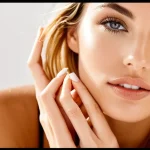The relationship between British fashion movements and women’s beauty styles
The interplay between British fashion movements and women’s beauty styles UK reflects a dynamic story of cultural and aesthetic evolution. For instance, the Mod movement of the 1960s introduced bold geometric patterns and vibrant colors, which directly influenced makeup trends, including dramatic eye shadows and sharply defined eyeliner. Women’s hairstyles echoed this shift with sleek, angular cuts that complemented the clothing’s modernity.
Later, the punk era of the late 1970s emphasized rebellion, mirrored in spiked hair, unconventional hair colors, and bold, dark makeup. This era marked a notable transition in beauty norms, highlighting self-expression over traditional elegance. The influence of British designers like Vivienne Westwood ensured that fashion and beauty became powerful tools of identity.
Also to discover : How can UK women achieve a minimalist wardrobe without sacrificing style?
Historical influence also extends to the Edwardian era, where intricate dresses paired with elaborate updos reflected the period’s emphasis on refinement and grace, linking clothing to poised beauty standards. These transitions illustrate how changes in British fashion movements generate shifts in women’s beauty styles UK, underscoring a continuous dialogue between fabric, form, and facial aesthetics. The evolving styles are not just trends but expressions of broader societal moods, captured vividly through the cycle of fashion and beauty.
Influential British designers and style icons shaping beauty standards
British fashion has long been a beacon of innovation, with iconic British designers like Vivienne Westwood and Alexander McQueen fundamentally reshaping global beauty standards. Westwood’s rebellious punk flair challenged conventional notions of elegance, promoting individuality and daring self-expression. McQueen’s theatrical yet precise craftsmanship infused fashion with a dark romanticism, influencing how beauty is perceived—embracing complexity rather than simplicity.
Have you seen this : What are the emerging UK beauty trends for women in 2024?
Beyond designers, British fashion icons UK such as Kate Moss have set new ideals, blending raw edge with timeless appeal, impacting beauty trends worldwide. Meanwhile, members of the British royal family consistently redefine grace and sophistication, proving that traditional elegance remains a powerful muse in contemporary beauty standards.
Street-style personalities from London’s vibrant neighborhoods also contribute by injecting authenticity and diversity into beauty expectations. Their eclectic looks challenge mainstream norms, fostering an inclusive vision where uniqueness is celebrated. Together, these designers, celebrities, and street-style figures create a dynamic dialogue that continuously evolves the British and international beauty landscape, emphasizing that beauty is multifaceted and ever-changing.
Cultural and societal factors driving fashion-beauty interplay
Exploring the UK cultural influences reveals how diversity enriches both fashion and beauty scenes. The melting pot of ethnic backgrounds fosters unique styles that challenge and reshape mainstream beauty ideals. For example, streetwear inspired by urban subcultures blends effortlessly with high fashion, creating a dynamic dialogue between identity and aesthetics.
Regional styles act as powerful agents in this interplay. The distinctive looks from cities like London, Manchester, and Glasgow bring forward localized expressions that influence national trends. These subcultures celebrate individuality, pushing beauty standards beyond conventional norms and inviting fresh interpretations of style.
Societal trends beauty also reflect broader social, political, and economic shifts. Movements toward inclusivity and sustainability increasingly shape how brands approach both sectors. Consumers today demand representation and ethical practices, encouraging designers and beauty companies to respond accordingly.
Together, these cultural and societal factors create a vibrant fashion-beauty ecosystem in the UK. This interplay drives innovation while respecting heritage and community voices, making the scene dynamic and forward-looking without losing its roots in diverse traditions.
Present-day examples of British fashion’s influence on women’s beauty
British fashion remains a powerful force, shaping contemporary beauty trends in the UK. Modern British fashion blends classic heritage with bold innovation, directly inspiring fresh beauty looks. For instance, London Fashion Week is pivotal, showcasing styles that ripple through celebrity looks and everyday street-style.
At London Fashion Week, designers debut not only clothing but also impactful beauty trends, influencing makeup palettes, hairstyles, and skincare routines. The event serves as a real-time laboratory where creativity informs women’s beauty choices nationwide. This synergy between runway and real life helps set standards for up-to-date makeup and skincare.
Social media influencers and celebrities play a vital role, amplifying these beauty trends. Their collaborations with British designers and beauty brands create tangible examples of how fashion drives daily beauty routines. Street-style photography also highlights how ordinary women interpret and personalize evolving trends, showcasing a vibrant mix that defines modern British aesthetics.
In summary, modern British fashion continues to mold contemporary beauty trends UK-wide through events like London Fashion Week and influential figures, bridging high fashion with accessible, everyday beauty expressions. This dynamic keeps British style both relevant and aspirational.
Analysis of fashion events and media’s effect on emerging beauty styles
Fashion media UK, especially British fashion publications, plays a pivotal role in shaping emerging beauty styles. These outlets act as trend incubators by spotlighting runway beauty trends and translating them into accessible daily looks. The influence of fashion media UK is evident as styles seen during London Fashion Week rapidly permeate into street style and consumer preferences.
Runway beauty trends often debut bold, experimental aesthetics. British fashion publications serve as interpreters, moderating these trends for wider appeal. They provide tips, tutorials, and product recommendations, enabling readers to integrate high-fashion looks into their everyday routines without feeling overwhelmed.
Both digital and print media channels amplify these trends differently. While print magazines deliver curated, in-depth features, digital platforms provide immediacy and interactive content, including videos and social media engagement. This dual presence enhances the popularity of beauty aesthetics across diverse audiences, from traditional readers to tech-savvy consumers.
The combined power of British fashion publications and digital outlets ensures that runway beauty trends influence not just fashion insiders but the broad public, democratizing high-fashion beauty and continuously evolving the UK’s beauty landscape.



